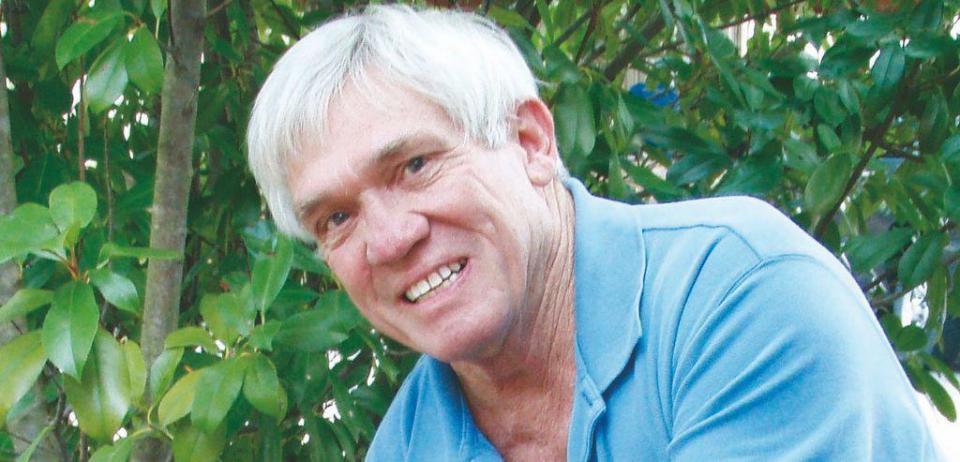ECOVIEWS: Remembering Alabama's own E.O. Wilson, a biology giant

- Oops!Something went wrong.Please try again later.
The last week of 2021 had a sad ending for the scientific fields of ecology, animal behavior, indeed for all of biology. Edward O. Wilson died on Dec. 26.
Wilson's prestige among modern biologists goes unsurpassed, and tracking the career milestones of such a luminary is both easy and difficult — easy because there are so many notable achievements to choose from; difficult because deciding which ones to select is a humbling task.
How do you appropriately classify the world’s top expert on ants who has also achieved the top tiers of excellence as an evolutionary biologist, sociobiologist, biogeographer and philosopher of scientific ethics? I will stick to fire ants, islands and biodiversity as appropriate topics for an environmental column.
Unknown to me at the time, I first crossed E. O. Wilson’s wake in the 1950s when, as a high school student in Tuscaloosa, I met professor Ralph Chermock. Wilson was already well on his way to becoming Chermock’s most famous student at the University of Alabama, where he completed his bachelor’s and master’s degrees.
I checked out Wilson's master's thesis on fire ants from the biology department. He was far ahead of anyone else in focusing on the potential threat of these new invaders from South America.
Everyone now knows about the peril of fire ants and how they are a continuing nuisance. But imagine a college student publishing this prophetic statement: "It is apparent, however, that the ants are going to have to be controlled soon. We are not certain yet of the danger they constitute to our wildlife and forests, but we are sure, at least, that they are farm pests of the first magnitude and that they have just begun to spread."
Wilson’s classic original research and thesis on fire ants became a yardstick for what a college student could achieve.
![A Gulf fritillary butterfly is part of the southeastern fauna that fascinated E. O. Wilson growing up and throughout his professional career. [Photo courtesy Parker Gibbons]](https://s.yimg.com/ny/api/res/1.2/zH.lFODuh4SE62YS5mkHMw--/YXBwaWQ9aGlnaGxhbmRlcjt3PTk2MDtoPTEwMzg-/https://media.zenfs.com/en/the-tuscaloosa-news/7cbf244d12f9e5965bad2bfd4f630e3d)
One of the biological principles with which Wilson is associated in the minds of ecologists and today's conservation biologists culminated in his 1967 book (with R. H. MacArthur) “The Theory of Island Biogeography.” The theory is a simple one even I can understand — the number of animal species present on an island is directly dependent on the size of the island. Larger islands have more species than smaller ones.
Also, similar-size islands differ in species numbers based on their distance from the mainland — distant islands have fewer species than nearby ones. The formulas are complex, but the basic principle that island size and the distance separating an island from other land has been the underpinning of thousands of ecological studies.
Included among Wilson’s many landmark books and other works are those that validated the importance of identifying and preserving the world's "biological diversity," a term that he eventually consolidated into the word "biodiversity."
His reputation for championing the protection of biodiversity on a global scale is widespread and penetrating, not only among his academic peers, conservation groups and environmentalists but also among the educated public.
Wilson also touched on the sensitive point of the good-news-bad-news about Alabama and other regions of the Southeast. Having grown up in the state, he appreciated the rich diversity of species and habitats found in Alabama and the surrounding Southeastern region, especially Georgia, Florida and the Carolinas. Nonetheless, although more species exist in the region than in most places outside of the tropics, more species have also gone extinct there.
Along with California and Hawaii, Alabama has been reported to have the highest extinction rate in the United States. Alabamians can be proud of their natural heritage of high species diversity, but they should be ashamed that more of those species could soon disappear if we do not stop destroying our natural habitats.
How do you go from being a nature-loving kid in Alabama to the most respected ecologist in America? E.O. Wilson’s first step was becoming fascinated with the natural biodiversity surrounding him, a gift available to all of us.
Whit Gibbons is professor of zoology and senior biologist at the University of Georgia’s Savannah River Ecology Laboratory. If you have an environmental question or comment, email ecoviews@gmail.com.

This article originally appeared on The Tuscaloosa News: Ecoviews: Remembering Alabama's own E.O. Wilson, a biology giant

